By Jay Palter | June 15, 2022
Table of Contents
Police work is challenging enough without the day-to-day headaches of equipment management. Unfortunately, those headaches are likely to get bigger in the years ahead as the scope and complexity of police work continue to grow. New regulations, new areas of responsibility, or just growth in your jurisdiction can require significant increases in the volume of police gear your personnel need to work with.
One approach many law enforcement agencies haven’t considered is the use of smart lockers to manage their police gear. Smart police lockers are more than just a storage system. They help you automate and improve any workflow where your personnel access gear.
Want to learn how? This article explains ten different ways smart lockers make life easier for law enforcement personnel.
See our free guide for "Everything You Need to Know About Physical Asset Tracking Systems"
What Makes Smart Police Lockers Different?
First though, exactly what makes police gear lockers “smart,” and what can they do that you can’t accomplish with a bare metal locker and a signout sheet? For starters, they offer four key advantages: automated transactions, detailed reporting, and remote management.
Automated Transactions
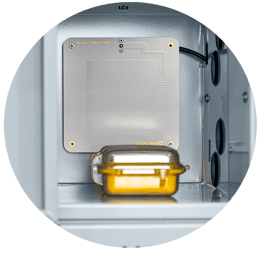 Whenever law enforcement personnel need something from the locker system they first authenticate themselves at the attached smart terminal. You can configure the terminal to accept whatever credentials you want, including PIN codes for lower security environments, access cards, and biometrics. Everything is electronic, so there is no chance for human error to creep into the transaction log.
Whenever law enforcement personnel need something from the locker system they first authenticate themselves at the attached smart terminal. You can configure the terminal to accept whatever credentials you want, including PIN codes for lower security environments, access cards, and biometrics. Everything is electronic, so there is no chance for human error to creep into the transaction log.
The smart terminal can then present the user with various options. For example, they can select the specific set of gear to sign out or return, and the locker system will unlock only the necessary compartments for those assets. You can also present the user with a checklist to record any required information, such as damage to equipment or consumable items running low, like spare batteries or medications in first aid kits.
Reporting
 The data the locker system collects feeds back into the central management system. Transaction times, who signed out which devices, when who returned them, if they were late, what defects they reported, all of this information and more is compiled into reports you can access in just a few clicks.
The data the locker system collects feeds back into the central management system. Transaction times, who signed out which devices, when who returned them, if they were late, what defects they reported, all of this information and more is compiled into reports you can access in just a few clicks.
You can even configure critical reports to send to email automatically, so you know the moment there is a problem. For example, if a patrol officer reports a technical problem with a radar kit or if certain controlled substances in medkits are running low.
Advanced locker systems can also include content surveillance systems. These systems monitor equipment stored in locker compartments. They can verify that electronic devices and other assets with wireless RFID tracking tags are actually signed out or returned. Electronic devices can report their status to the central management system and charge through wired USB connections.
Remote Management
You can network together locker systems at offices across your entire jurisdiction for easy central management. Personnel at each local office get easy access to the gear they need, while operations staff at headquarters maintain control and get instant insights into any issues.
Smart locker reporting can also help reveal patterns you might not have noticed across equipment distributed throughout your organization. For example, maybe officers at three or four different bureaus are seeing the same error on a particular model of handheld ticketing device. Or maybe no one is actually using those new med kits you ordered for mandatory use.
10 Ways Smart Police Lockers Improve How You Work
So that is how a smart locker works. But what exactly can smart police lockers do to make life easier for law enforcement personnel?
1. Workforce Enablement
This concept has been around for a few years but is often unknown outside some management training circles. That is too bad because it is a fantastic idea most organizations would benefit from applying.
In short, workforce enablement is when you give your personnel the resources to be more self-sufficient in their jobs. It is the opposite of micromanagement. If you give them those resources, studies have shown that they will carry out their work more effectively. The challenge is in finding the right ways to support your workers.
Smart police equipment lockers allow law enforcement personnel to self-service access the gear they need in a controlled environment. Off hours, they don’t need to wait for a superior officer or equipment manager to be around to help them get what they need.
And since you can build quality control checklists into asset transactions, you still exert the necessary checks and balances on equipment use. Reminders popping up on the smart terminal screen can help prevent officers from accidentally forgetting kit components on their way out on patrol.
2. 24/7 Access
Smart police gear lockers are fully automated electronic systems available around the clock. They never get tired, don’t need to leave when a shift ends, and never have to call out sick. So no matter whether you have an urgent request from the third shift or an unexpected spike in demand at a remote location, an automated smart locker can handle it for you.
.jpeg?width=360&name=Blog-%2385_Inside_Banner_1200x1080_2%20(1).jpeg)
3. Detail reports on anything you need
Law enforcement agencies across North America are coming under a greater and greater regulatory burden for tracking firearms, narcotics, and other critical assets. Smart lockers offer automated logging and reporting, making it easy to comply with any regulatory standard. As a result, you’ll always know exactly who has which assets, when they signed them out, and when they’re scheduled to return them.
Smart police locker systems include many reports designed to meet the needs of law enforcement agencies right out of the box. Advanced systems also offer customizable reports that can present any data the system's collector has on transactions or stored assets compiled in the format you need.
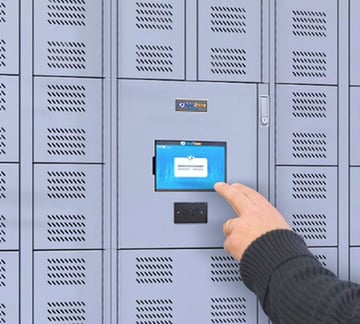
4. Authentication for every transaction
Smart police lockers replace error-prone paper logbooks with smart terminals that can accurately record every transaction down to the second. In addition, they can support a range of different authentication types, including PIN codes, swipe cards, RFID fobs, and many different kinds of biometrics.
5. Restricted access
Smart lockers give police forces detailed control over who can access which gear and when. You can set special conditions on their sign-outs too. We’ve already talked about presenting quality control checklists. You can also set signout curfews on important assets.
For example, you can set curfew alerts that require personnel to return shared firearms at the end of their shift. The minute their shift ends and a weapon is still out, the weapons locker system alerts supervising officers.
You can restrict access by individual, location, or job type. For example, you can configure lockers to only release medkits containing narcotics to registered EMTs or your agency’s pharmacy manager to prevent drug diversion.
6. Tracking and content surveillance
Using RFID sensors right in compartments allows for enhanced control over police gear transactions. Wireless RFID content surveillance systems are especially valuable for verifying kit signouts. For example, a smart locker can identify each kit component even when they’re all stored in the same compartment.
That means the system can identify if an officer forgets to take a component or forgets to return one. The locker system can remind the officer to take anything they’ve forgotten and alert supervisors of missing components on return so they can be tracked down.
7. Real-time insights
At best, manual paper-based tracking moves at the speed of a phone call. However, smart lockers are fully digital, so you get instant insights and alerts on what you care about most.
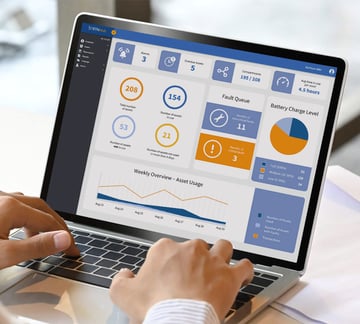
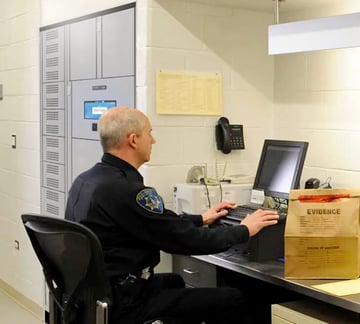
8. Streamlining evidence intake
Police forces can also use smart lockers for evidence management. For example, the smart terminal can present intake checklists and function as a deposit system for officers and detectives returning from investigations. Then you set the lockers only to unlock for authorized evidence managers to move evidence to storage.
9. Automated, error-free chain of custody
Since the evidence intake process is automated, your personnel can deposit new evidence into evidence lockers 24 hours a day. No more waiting for an evidence manager to be on duty. Locker logging also helps ensure an error-free chain of custody.
10. Flexible, secure storage for all types of equipment and evidence
No two law enforcement offices have the same storage needs. Advanced smart lockers offer a modular design so you can stack together different sized compartments to store the gear you need in the space you have to work with.
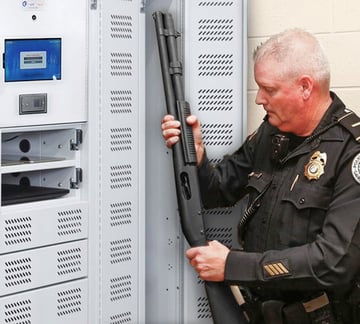
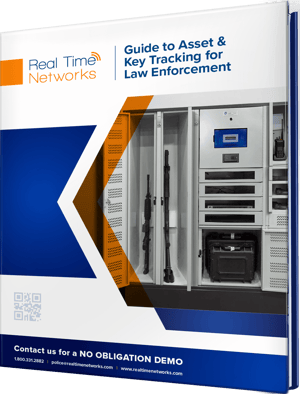
Want to learn more?
Check out our Guide to Asset and Key Tracking for Law EnforcementSubscribe to our blog

Jay Palter
Vice President of Marketing & Partnerships





